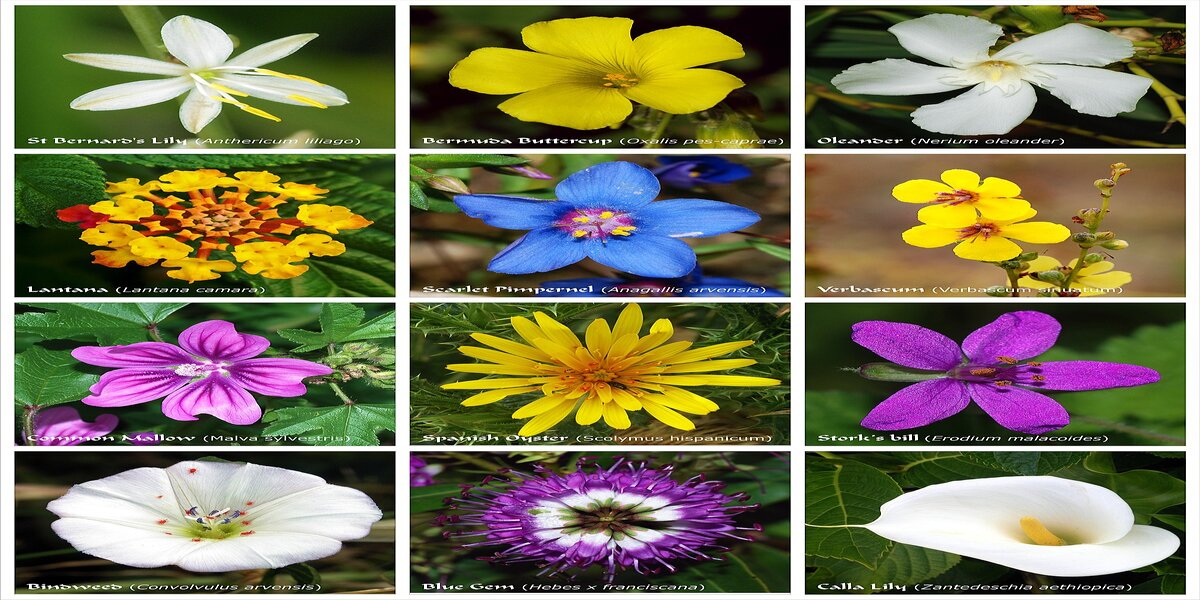Exploring the Rich Diversity of Flowers A Comprehensive Guide

Flowers, the exquisite symbols of beauty and nature’s craftsmanship, have fascinated humanity since ancient times. With over 400,000 different species known to mankind, flowers encompass an astounding diversity of forms, colors, and fragrances. Each type holds a unique story, whether cherished for their ornamental value, cultural significance, or medicinal properties. In this comprehensive guide, we delve into the enchanting world of flowers, categorizing them by types, characteristics, and notable examples.
Understanding Flower Types
Flowers are broadly categorized into various types based on botanical characteristics, growth patterns, and usage. Understanding these types not only enhances our appreciation for their diversity but also provides insights into their ecological roles and cultural importance.
1: Annuals vs. Perennials
Annual Flowers: These flowers complete their life cycle—germination, growth, flowering, and seed production—within a single growing season. Examples include marigolds, zinnias, and petunias.
Perennial Flowers: Perennials live for multiple years, often regrowing from their roots each spring. They provide continuous blooms year after year, such as roses, tulips, and lilies.
2: Wildflowers vs. Cultivated Flowers
Wildflowers: Found growing naturally in the wild, these flowers are typically native to specific regions and play crucial roles in local ecosystems. Examples include sunflowers, poppies, and daisies.
Cultivated Flowers: These are deliberately grown and nurtured for their aesthetic appeal or commercial value. They include hybrids and varieties bred for specific traits like size, color, or disease resistance, such as orchids, dahlias, and chrysanthemums.
3: Bulbs, Tubers, and Rhizomes
Bulbous Flowers: These flowers grow from bulbs, which are specialized underground storage structures. Examples include tulips, daffodils, and hyacinths.
Tuberous Flowers: Tubers are thickened underground stems, producing plants like begonias and cyclamens.
Rhizomatous Flowers: These plants grow from horizontal underground stems called rhizomes, as seen in irises and ginger lilies.
Popular Flowers and Their Meanings
Flowers have been assigned meanings and symbolism across cultures and ages. Here are some notable examples:
1: Roses
Known as the ultimate symbol of love and passion, roses come in various colors, each carrying its own significance. Red roses symbolize love, while yellow roses represent friendship.
2: Lilies
These elegant flowers symbolize purity and refined beauty. White lilies are often associated with innocence and sympathy, making them a common choice for funerals.
3: Orchids
Renowned for their exotic beauty, orchids symbolize luxury, beauty, and strength. They are highly prized in floral arrangements and as decorative plants.
4: Sunflowers
With their bright yellow petals and large, round centers, sunflowers symbolize adoration, loyalty, and longevity. They also evoke feelings of warmth and happiness.

Flowers in Culture and Tradition
Beyond their aesthetic appeal, flowers hold significant cultural and traditional importance worldwide:
1: Weddings and Celebrations
Flowers play a crucial role in weddings and celebrations, symbolizing joy, prosperity, and new beginnings. Bouquets, corsages, and floral decorations are integral parts of these ceremonies.
2: Religious Symbolism
Many religions incorporate flowers into their rituals and symbolism. For example, lotus flowers are revered in Buddhism for their purity and spiritual awakening.
3:Medicinal and Culinary Uses
Several flowers have medicinal properties or are used in culinary applications. Calendula, for instance, is known for its anti-inflammatory properties and is used in herbal remedies and skincare products.
Threats and Conservation Efforts
Despite their resilience and beauty, many flower species face threats from habitat loss, climate change, and over-harvesting. Conservation efforts are critical to preserving biodiversity and ensuring the survival of endangered species. Organizations and initiatives worldwide focus on protecting native flora and promoting sustainable practices in horticulture and agriculture.

Conclusion
Flowers captivate us with their sheer diversity and beauty, enriching our lives in myriad ways. From ancient symbolism to modern-day uses in art, medicine, and cuisine, flowers continue to inspire and fascinate us. As we navigate through their enchanting world, it becomes evident that flowers are not merely botanical marvels but also cultural icons deeply woven into the fabric of human history. Whether adorning a garden, brightening a room, or conveying heartfelt emotions, flowers remind us of nature’s boundless creativity and the enduring power of beauty. Embrace the world of flowers and discover the endless wonders they offer to enrich our senses and nourish our souls.

